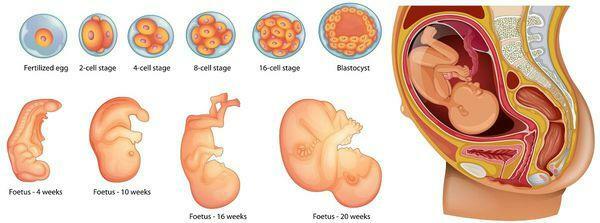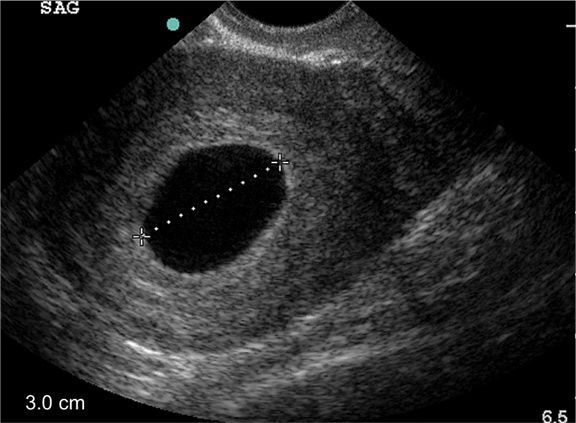Content
- What is a frozen pregnancy
- Causes of missed pregnancy
- Classification and stages of development of missed pregnancy
- The first symptoms of a missed pregnancy
- Allocations during a frozen pregnancy at different times
- At an early stage
- In the second and third trimester
- Features of discharge during a frozen pregnancy
- How to determine a frozen pregnancy
- Treatment
- Cleaning during a frozen pregnancy
- Discharge after cleaning a missed pregnancy
- Why does bleeding occur
- Danger of lack of secretions
- Discharge after scraping
- Color and smell
- Postoperative complications
- When to See a Doctor
- Prevention of missed pregnancy
- Family planning after a missed pregnancy
- What can we advise mothers whose pregnancy ended unsuccessfully
Altered discharge during pregnancy should alert the expectant mother, as they may indicate not only infections, but also the pathology of fetal development. This is especially true of blood and brown discharge, which often signal a missed pregnancy or a threatened miscarriage.

What is a frozen pregnancy
A missed pregnancy is called intrauterine fetal death, which occurs in the vast majority of cases in the early stages. The concept of "early term" includes terms up to 13 obstetric weeks.
In most cases, the verdict "non-developing pregnancy" is made on ultrasound, so as it is clearly seen that the fetus does not correspond to the gestational age, and also it does not have heartbeat. Sometimes an empty fetal egg is found.
The fading of pregnancy, left unattended and diagnosed late, can have undesirable consequences in the form of purulent peritonitis and intoxication of the body. Therefore, if a pregnant woman has symptoms that have not been observed during the period from the onset of pregnancy, you should immediately be examined by a specialist.
Severe complications that occur if the dead fetus is inside for more than 3-4 weeks can lead to the death of the patient, for example:
- blood poisoning;
- infection of internal organs;
- disseminated intravascular coagulation;
- uterine bleeding.
Causes of missed pregnancy
There are currently four categories of causes:
- malformations of the genital organs;
- chromosomal and genetic mutations of the embryo are the main causes of miscarriage, they are detected in 80% of cases of miscarriage;
- pathology of the endometrium (internal mucous membrane of the uterine cavity), in which it cannot ensure the normal course of pregnancy;
- changes in the blood coagulation system - hereditary thrombophilia and antiphospholipid syndrome.
Sometimes severe stress, or mechanical trauma in the form of strong blow, or a fall that affects the abdominal or lumbosacral region department. If during the planning period and the initial stage of pregnancy there is an urgent need to take any medication drugs, it is necessary to pay attention to a number of contraindications, among which the presence of pregnancy may also be present. Some drugs can accumulate in the body and, as a result of this accumulation, side effects may appear in the form of a missed pregnancy or early miscarriage.

Other causes of missed pregnancy and early miscarriages can be anatomical disorders, infections, endocrine diseases, as well as toxic, immunological and other factors.
Identification of the cause of a missed pregnancy allows you to exclude its recurrence. If during the examination of the spouses it was not possible to establish the cause of this pathology, then a successful subsequent pregnancy is allowed only in 65% of cases.
Classification and stages of development of missed pregnancy
According to the ultrasound of the small pelvis - the main method for diagnosing a missed pregnancy - there are two types of this pathology:
- anembryony - the absence of an embryo in a fertilized egg.
- the death of an embryo or fetus (missed miscarriage) - a stop in the development of the fetus during its initial normal formation.
The embryo in the fetal egg may be absent in two cases: when it was not initially formed or stopped developing at the fifth week of pregnancy or earlier. In cases where, according to the results of ultrasound, the embryo in the fetal egg cannot be detected, in addition to a missed pregnancy, it is also worth assuming an early term for the development of pregnancy.

With the death of an embryo in early pregnancy, according to the results of ultrasound, it is possible to detect its destroyed parts or a clot. When the fetus freezes in the later stages, during ultrasound, the embryo cannot be completely detected, since its structure is split.
It is also worth noting that in most cases, the threat of abortion or miscarriage in the early stages occurs precisely after the death of the embryo.
The first symptoms of a missed pregnancy
What are the first symptoms of a missed pregnancy? If this process occurred during the first trimester, then the woman may not feel anything. One of the first signs during this period may be a discrepancy between the size of the uterus and the standards. So, it can be both greatly increased and reduced. Only a gynecologist can notice this.
In addition, nausea may occur, as well as sensitivity to odors. But this also applies to toxicosis. Another thing is if these symptoms disappear abruptly. Most likely, in this case we are talking about a frozen pregnancy.
If the period is long, then an unpleasant phenomenon is accompanied by engorgement of the mammary glands. There is also a large amount of discharge. Then there are cramping pains in the lower abdomen. Then there is a discharge from the genital tract, which is similar to menstruation.
When the first symptoms appear, you should immediately seek help from your doctor. Because a frozen pregnancy is not a joke at all, it must be detected immediately.
The following symptoms suggest that the baby has stopped developing:
- Bleeding or spotting (including spotting). This is the very first sign indicating a possible miscarriage. The dead fetus (or embryo) eventually begins to separate from the walls of the uterus, which is accompanied by the release of blood and pulling pain.
- General weakness, dizziness, fever.
- Feeling better. This is a very subjective sign, since in most women the fading of pregnancy occurs against the background of ongoing toxicosis (that is, outwardly no changes occur, and the woman is sure that she is still pregnant).
- The disappearance of swelling and soreness of the mammary glands. During a missed pregnancy, progesterone, which is necessary for the preservation and development of the fetus, begins to be produced in smaller quantities, which affects the preparation of the mammary glands for future feeding. The breast begins to return to its previous size, and the nipples and areola become soft again, the characteristic swelling and hardness disappear.
Allocations during a frozen pregnancy at different times
Discharge during a frozen pregnancy is a completely normal process. More precisely, on this basis, you can determine that something is wrong. What are the usual discharges early and later?
At an early stage
Basically, reddish discharge is observed in the early period of a missed pregnancy, which looks very similar to menstruation. This should not happen during pregnancy. If there is such a phenomenon, then most likely we are talking about serious problems. In addition, the discharge is often accompanied by severe cramping pain. Sometimes they are very sharp and are able to give to the lower back.
If you notice such signs, you should consult a doctor. Frozen pregnancy is a serious pathology. If you do not diagnose it in time, then in the future all this can happen again.
If the discharge is not reddish, but faded, then this is quite normal, especially in the early stages of pregnancy. Moreover, red discharge does not always indicate the presence of a missed pregnancy. In fact, there can be many reasons for this. But it is important to get advice from a doctor.
In the second and third trimester
With the death of the fetus in the middle period of pregnancy and later, the mammary glands engorge, with a frozen pregnancy, colostrum is released. Symptoms appear 2-6 weeks after its cessation: women complain of pulling pains in the lower abdomen, bleeding from the genital tract and miscarriage may occur. Such situations require inpatient treatment to prevent bleeding and purulent-septic complications.
Features of discharge during a frozen pregnancy
Discharge with blood or brown color during pregnancy can signal the death of the embryo. With a frozen pregnancy, pathological leucorrhoea is characterized by a viscous consistency, small volumes, an unpleasant odor and is accompanied by pulling pains in the lower abdomen.
Discharge can warn of a developing infection, inflammation, and that the fetus has begun to decompose. At the first symptoms, it is urgent to contact a gynecologist who will prescribe the necessary diagnostics.
How to determine a frozen pregnancy
The only reliable method for determining a missed pregnancy is an ultrasound of the uterus (see. ultrasound during pregnancy). Home pregnancy tests can remain positive during a missed pregnancy, because even in the absence of a live embryo, its membranes continue to produce hCG. (cm. HCG analysis).
Treatment
If a woman with this diagnosis does not have a miscarriage, then the dead fetus must be surgically removed by vacuum aspiration and/or curettage. Natural rejection is easier to tolerate, since in this case the cavity and cervix are not injured. But if the dead fetus is delayed, surgical extraction is inevitable, because otherwise the infection, spread by necrotic tissues of the embryo, will lead to infection of the internal organs of intoxication of the entire body and sepsis.
With a spontaneous miscarriage, the woman's childbearing function is restored after three months. Surgical impact on the endometrium will require a longer recovery: the next conception can be planned no earlier than in three months to six months. In any case, the possibility of the next conception can be discussed after the establishment of the menstrual cycle. This usually takes two weeks to two months.
The algorithm of action of doctors with absolute confirmation of fetal death depends on the gestation period. If the incident occurred for up to 8 weeks, then the patient, according to indications, may be prescribed progesterone antagonist drugs. These substances provoke miscarriage. Surgical curettage is used according to indications for periods of more than 7-8 weeks. A very common occurrence in a missed pregnancy is the presence of infection when sowing material from a vaginal smear. After the delivery or extraction of a lifeless fetus, the patient is prescribed a course of broad-spectrum antibiotics. For normal recovery and preservation of reproductive function, doctors determine the cause of the pathology: tissue histology is performed embryo, a genetic study of the embryo and, if necessary, the karyotype of both parents is examined, followed by a consultation genetics.
The examination program is aimed at detecting latent infections, an analysis of the hormonal profile is carried out, and special attention is paid to the thyroid gland. To exclude the influence of the male genetic factor, a spermogram is prescribed. All these actions are necessary to minimize the recurrence of non-developing pregnancy at the next conception. The inability to bear a child, if it is not caused by stress or an acute infectious disease, indicates a problem in the body. Therefore, it is necessary to be examined and treated, even if the woman no longer plans a child.
Cleaning during a frozen pregnancy
Cleansing the uterine cavity is a surgical intervention that is performed under general or local anesthesia. Before the operation, the following are carried out:
- analysis for hCG, syphilis, hepatitis, HIV;
- cardiogram;
- ultrasound procedure;
- general smear examination;
- coagulogram.
Gynecological cleaning is mandatory in the early stages, if there is no spontaneous miscarriage. With unsuccessful medical aspiration. For periods of more than 8 weeks, the procedure is necessary even with spontaneous miscarriage, since fragments may remain in the uterus fetus, which will lead to inflammatory processes and blood poisoning, which is fraught with dangerous complications and fatal outcome.
Medical aspiration is the most gentle, but not the most effective method of abortion. A woman, under the supervision of a gynecologist, takes a special pill that causes uterine contractions, during which the body independently pushes out a dead fetal egg. Unfortunately, this method does not always lead to the expected effect.
In addition to medication, there are two types of cleaning, it is vacuum and surgical. In the first case, special vacuum equipment is used, which gently separates the fetal egg from the walls of the uterus. This method has a minimum of side effects, a short rehabilitation period. Vacuum aspiration is less traumatic and rarely leads to infertility and complications.
Surgical abortion is performed using forceps and a curette that crushes the embryo to effectively remove it from the uterine cavity. The fetus is almost scraped, which can adversely affect the condition of the uterus.
Often, after such an intervention, inflammatory processes develop, and there is some risk of infertility. After curettage, some time is required for recovery, additional treatment and regular visits to the doctor, who will monitor the patient's condition for a certain period.
Discharge after cleaning a missed pregnancy
After cleaning, a woman has intense discharge. During this period, it is strongly not recommended to use tampons, it is better to use standard hygiene products designed for heavy menstruation.
Why does bleeding occur
Why, with a frozen pregnancy - after cleaning - does the discharge begin to come out on the first day? Regardless of the reason for resorting to the scraping procedure, as a result of it, the functional layer of the endometrium is removed artificially. After that, the uterine cavity for a specific period of time continues to be a kind of bleeding wound.

The general condition of a woman after this type of surgery is more reminiscent of the condition during the first menstruation or immediately after them, since menstruation, in fact, is a natural state in which obsolete pieces are rejected endometrium.
Despite this, many girls and women complain that after cleaning they begin to feel much worse, since any intervention during physiological processes in the human body with a certain force affects the state of organs and internal systems.
Danger of lack of secretions
In fact, one should not really be scared when, after scraping, regular bleeding, and in the case when, after this procedure, there are no discharges from the penis at all. Such a problem needs immediate help from a specialist.
If, after the operation, the woman does not begin to bleed, then in most cases this indicates that a hematoma has formed on the cervix, which does not allow all the contents to come out normally, which is dangerous for health.
Discharge after scraping
After cleaning during a frozen pregnancy, a woman may experience discharge of this nature:
- brown discharge indicates that the blood begins to clot, and they will soon stop;
- severe bleeding, accompanied by pain and high fever. These secretions have an unpleasant odor. This indicates that complications have arisen;
- yellow highlights. The presence of such secretions means that an infection has entered the body and antibiotic treatment may be needed.
Normally, white mucous discharge is restored when bloody discharge ends and there are no complications.
Color and smell
The last thing to remember is that the blood discharge should not have an unpleasant odor. Their color should be uniform, without sharp transitions. If they exude an unpleasant, unnatural smell or differ in an unnatural color, then it is important immediately consult a doctor for diagnosis and identification of possible inflammatory processes.
In the presence of the described conditions, the discharge cannot be attributed to normal, they need mandatory monitoring by a gynecologist, and, if necessary, complex treatment.
Postoperative complications
After cleaning infrequently, but the following complications occur:
- rupture of the cervix. Often the cause of this complication is the dismounting of the bullet tongs. Small tears heal on their own, larger ones require suturing.
- perforation of the uterus. During the operation, the uterus can be pierced by the tools used in the "cleaning". Large perforations require suturing;
- hematometer. Spasm of the cervix leads to the accumulation of blood inside the uterus, as a result of which there is a threat of infection;
- inflammation of the uterus. The causes of this complication include violation of antiseptic requirements and lack of antibiotic treatment. A symptom of the appearance of inflammation of the uterus may be a high temperature;
- damage to the germ layer of the endometrium. This complication is difficult to treat. There is a threat that the endometrium may never recover;
- the pathological formation, due to which the cleaning was prescribed, was not completely removed or not removed at all. This means that repeated scraping will be required. Sometimes neoplasms (for example, a polyp) appear again, then repeated cleaning cannot be avoided either.
When the operation is performed correctly and accurately by an experienced specialist, these complications practically do not occur.
When to See a Doctor
The following manifestations can tell a woman about the development of a pathological condition:
- too long spotting, lasting more than two weeks, may indicate a hormonal failure;
- the appearance of a sharp smell of rotten fish and brown staining of the discharge (the color of meat slops) may indicate an infectious-inflammatory process of the genital organs;
- a sharp cessation of any vaginal discharge may indicate the formation of a large blood clot that cannot leave the uterine cavity on its own;
- severe pain in the lower abdomen, general weakness and fever allow the doctor to suspect incomplete removal of the fetal egg.
All of these signs should cause a woman to immediately consult a doctor.
Prevention of missed pregnancy
In order to reduce the risk of developing a missed pregnancy, it is necessary:
- live a healthy life;
- before planning the conception of a child, undergo a full examination and, if pathologies are found, carry out the therapy prescribed by the doctor;
- be examined with a partner for genetic abnormalities;
- check your hormones.
During the bearing of the baby, it is important to visit the doctor regularly, follow all his instructions, give up bad habits, eliminate any stress, nervous strain.
Family planning after a missed pregnancy
All women and their partners experience the loss of even an unborn child as a great tragedy. You won’t be able to quickly forget about it, but it’s best to pull yourself together and think about a future pregnancy. Focusing on the next task helps you get over the loss.
It is very important when planning the next pregnancy after a dead one, to prepare the body. It is necessary to wait for the restoration of the menstrual cycle, as well as the complete regeneration of the endometrium damaged during surgical curettage (if any). Menstruation in the absence of complications is restored up to six weeks. But if a married couple has sex, then conception is not excluded during this period. The onset of pregnancy before three months is undesirable, so a woman should be protected until the moment when her body is ready for conception.
The right time for a new pregnancy after a frozen one depends on the state of health of the woman, as well as on the method of exit of the deceased fetus. If it was a miscarriage, then you can conceive a child after three months. Surgical extraction requires six months of rehabilitation, and then, without delaying for a long time, you need to try to get pregnant.
What can we advise mothers whose pregnancy ended unsuccessfully
What happened to you is not uncommon. Modern research proves that every fifth pregnancy is terminated spontaneously. It’s just that some miscarriages happen so early that women don’t even know they were pregnant, considering what is happening to be a menstrual cycle failure.
Remember: you are not to blame for what happened, just like the father of the child, and the doctors. The chances of this child surviving were no better than if the pregnancy had not occurred at all.
What happened to you is a tragedy. Do not be afraid to discuss this with your husband, parents, girlfriend. Don't lock yourself up! Feel free to contact a psychologist.
Frozen pregnancy in the vast majority of cases is an accident. Nothing will stop you from getting pregnant and having a healthy baby. The chances of another pregnancy being aborted are exactly the same as those of your friend who has no children yet. Or like a friend who already has five children. In other words, unfavorable statistics do not accumulate, each time everything starts from scratch.
And let a happy motherhood story appear on this clean slate!
Sources
- https://ProBolezny.ru/zamershaya-beremennost/
- https://ilive.com.ua/family/priznaki-zamershey-beremennosti_113105i15859.html
- https://doctor-moskva.ru/napravleniya/beremennost/zamershaya-beremennost/
- https://detdom-vidnoe.ru/for_parents/3781.php
- https://KRMed.ru/articles/zamershaya_beremennost.html
- https://FB.ru/article/454004/skolko-mogut-byit-vyideleniya-posle-chistki-zamershey-beremennosti-osobennosti-protseduryi-posledstviya-sroki-vosstanovleniya
- https://www.probirka.org/biblio/polezno/7181-viskablivanie-i-vozmozhnie-oslozhneniya-posle-protseduri
